
It’s been an extraordinary twelve months in the tech world, with endless juicy rumors, exciting new devices, unexpected announcements, and plenty of trouble too. There have been a few disappointments – with quite a few unusual moments along the way – but 2014 has nonetheless been a hell of a ride.
In this article, we revisit some of the biggest news stories from across the tech world over the past year, including many that will continue to develop well into 2015.

We start with the announcement of Windows Phone 8.1 back in April, which – despite sounding like an incremental 'point' update to the OS – was actually its most significant update ever. With its release, for the first time, critics and consumers alike were beginning to talk about Windows Phone as being almost on the same level as rival operating systems, and although many gaps remained (and still do today), many major and significant new features were added with 8.1, making it finally feel like a mature and reasonably complete OS.
The most remarkable feature that debuted with Windows Phone 8.1 was Cortana, Microsoft's digital ‘personal assistant’. More than just offering a voice interface for stuff like making calls or searching the web, Cortana goes beyond basic voice interactions by also being able to proactively help you to manage your life and be more productive.
You can use her to set conditional reminders, such as “remind me to buy milk next time I’m at the grocery store”; she can alert you when it’s time to leave for work or for a party, based on current traffic conditions; and she can even get to know you better, surfacing news, sport, lifestyle and leisure articles and events that may be of interest to you. Developers can also integrate Cortana support into their apps, extending the capabilities of the assistant considerably.
Cortana is only available in a handful of markets so far, but the rollout of Windows Phone 8.1 has continued throughout the year. Even so, some handsets still haven’t received the update, eight months later.
But alongside Windows Phone 8.1, Microsoft also announced the Preview for Developers program, giving early access to new OS builds for developers, early adopters and enthusiasts – so those who have so far been left behind by update rollouts can still download and install the latest versions of the OS, albeit on a preview basis.

At the same time that Microsoft launched Windows Phone 8.1, it also revealed dramatic changes in its Windows licensing structures. The company announced that small devices – with displays smaller than 9-inches – would no longer require Windows OS licensing fees, massively reducing the cost burden of creating a Windows Phone or other low-cost Windows device.
The impact of this change cannot be underestimated. Depending on the total volumes they shipped, manufacturers were believed to be paying somewhere in the region of $15-$30 in Windows Phone OS licensing for each handset sold. At a time when manufacturers were under pressure to bring smartphone prices down to sub-$100 levels, that OS license charge added a huge burden to OEMs already dealing with wafer-thin margins.

By removing this burden, Microsoft finally began fighting a more even fight against Android in the battle for smartphone users, and the results have been dramatic. Since Microsoft dropped its fees for small Windows devices, it has succeeded in attracting over 50 new hardware partners – many building 7- 8- and 9-inch tablets from as little as $60 USD – and over two dozen of which have launched Windows Phones this year, up from just four in 2013.
Microsoft is also offering a discounted ‘Windows 8.1 with Bing’ OS version to manufacturers for low-cost Windows notebooks, which has seen prices for 11-inch laptops fall to as little as $199 in recent months.
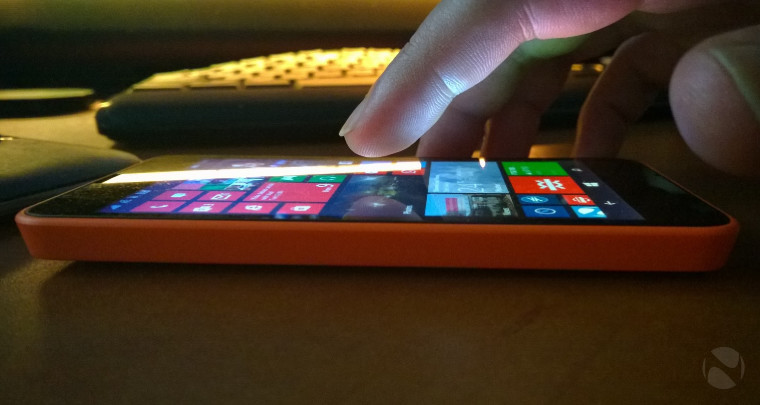
But these remarkable changes for Windows are nothing compared to what Microsoft has in store next. This year, it became clear that the company was planning something quite different for its new Windows release, including the revelation that the Windows Phone OS – along with the much-loathed Windows RT for tablets – would soon be no more. Instead, these would be replaced by a new unified OS that would, for all intents and purposes, be the same as the new Windows operating system installed on laptops and desktops.
On September 30th, Microsoft announced Windows 10 – leapfrogging Windows 9 entirely, as if to underline what a significant jump ahead the new OS represents over what came before. Microsoft has gone out of its way to demonstrate that it’s listening to user feedback from Windows 8 and 8.1 – and there is no better demonstration of this than the new Windows Insider program.

While new Windows OS releases have always been made publicly available before their full launch, Microsoft has now taken things to a new level, with a more accessible, community-based approach to previewing new versions of Windows. Since releasing its first preview build of Windows 10 on October 1st, numerous additional builds and patches have been released, and the company continues to add new features to the OS while canvassing user feedback.
The OS itself won’t be released until at least mid-2015, but it will be a huge step forward, and not just because of the return of the classic-style Start menu. An updated version of Microsoft’s Modern design language will be introduced; Cortana will be available on the desktop; virtual desktops have already made an appearance; and a new ‘Continuum’ mode will automatically detect the presence of a keyboard on touch devices, and adapt the UI accordingly.

Perhaps the biggest news of all is that some version of Windows 10 will run not solely on laptops, tablets, desktops and even smartphones, but also on set-top boxes, smart TVs, the Xbox One, micro-PCs, and embedded scenarios, such as point-of-sale terminals, printers and information kiosks.
Make no mistake: Windows 10 will be Microsoft’s most significant operating system launch ever. We’ll learn a lot more next year, not just about the OS itself, but about the company too, and perhaps also about how significant a role Windows – which has traditionally been one of Microsoft’s biggest cash cows – will play in its future.

One of Microsoft’s smallest innovations this year could prove to be one of its most significant products ever. It showed off a demo using its Skype communications platform, in which two people took part in a video call, each speaking in different languages – English and German – while Skype was translating what they were saying to each other.
When the lady spoke in German on the call, her English friend could still hear her speaking in German, but he would also see her translated statements being transcribed on screen, so that he could understand what she was actually saying. The translations were generated in near-real-time, with only a brief delay between each vocal statement and its corresponding translation appearing on screen. And with Microsoft’s extensive machine learning infrastructure, Skype Translator is only expected to get better with time.
Microsoft had previously hinted that this technology - which has invited obvious comparisons with the 'universal translator' from Star Trek - was in development back in 2012. However, many Microsoft Research efforts remain confined to the lab - or get incorporated into other products in often unrecognizable ways - so few people were expecting the translator to be made available as a real-world product anytime soon.
But the company has in fact already released its first preview version – and the possibilities opened up by the service are clearly enormous. By breaking down the language barrier in real-time, Microsoft will be opening up exciting new possibilities, such as opportunities for cross-border and global e-commerce, or for sharing knowledge and making friends in other countries. With language no longer an obstacle, companies around the world will be able to interact with new customers, perhaps even in markets that were previously beyond their reach.
Skype Translator is hugely ambitious and very exciting indeed – and it’s not at all surprising from the Microsoft that has been developing over the last twelve months. The company has been spreading its wings in many directions, throwing off the shackles that had previously confined it to thinking about Windows and Office above all else.

In 2014, Microsoft has embraced cross-platform development and support in a huge way. It took a huge step in this direction when it made Office available on iOS, but it went even further when it announced later in the year that Office would be completely free for all phones and tablets, including the ability to create, edit and share documents.
Even Microsoft’s suite of MSN apps – such as News, Travel, Sport, and Health & Fitness – have made their way to other platforms, after previously being made available only on Windows 8 and Windows Phone.
In fact, Microsoft is even chasing developers creating software for other platforms – in November, it announced new dev tools for Android, including a dedicated emulator, as part of its new Visual Studio 2015 release.
_story.jpg)
Microsoft is changing, and cross-platform is a big part of that – and the driving force behind this new direction for the company is its CEO, Satya Nadella, who stepped into the role in February, after former chief executive, Steve Ballmer, had stood down several months earlier.
Under Ballmer, Microsoft had flown the flag of being a "devices and services company"; but Nadella set a new course for Microsoft, with a new mantra: “Mobile first, cloud first.” If you can look past the inelegance of setting two supposedly equal priorities, you may accept Nadella’s premise that mobile and the cloud are inextricably linked and must be treated as such, and that the growth of each one will fuel the growth of the other too, in an industry-wide virtuous cycle.
It’s this thinking that has led to the controversial move of making Microsoft’s apps and services available across multiple platforms – a move that has left some Windows fans fuming, as they insist that doing so offers fewer unique selling points for Windows phones, tablets and PCs.

When he became CEO, Nadella inherited Ballmer’s decision to acquire Nokia’s devices and services business – a deal that was finally completed in April of this year. With that, Microsoft became one of the world’s largest handset manufacturers, and in November, it launched the first phone to carry its own logo: the Microsoft Lumia 535.
But that acquisition came with a lot of new employees too, and Microsoft quickly found that its workforce had exploded in size at a time when it needed to bring costs under control across the entire organization. As a result, the company announced the largest layoffs in its history, with 18,000 jobs lost – and redundant Nokia employees who had just joined Microsoft were hardest hit, representing 12,500 of all job cuts.

There were many other casualties too, including Xbox Entertainment Studios – the division responsible for producing original movies, TV and video content, which was closed amid allegations of mismanagement – as well as Microsoft Research facilities in the US and in China.
Despite no longer officially being a ‘devices and services company’, that’s exactly what Microsoft remains, now that it’s in charge of Nokia’s phone business, alongside its Surface range. It’s been quite a storied year for Surface, with no end of speculation and surprises.

One of the biggest stories of the year was about a device that still hasn’t been seen publicly, but which Microsoft came so very close to launching. In fact, the company even sent out invitations to the media for a launch event that clearly referenced the existence of that device. But the device itself was a no-show.
We’re speaking, of course, about the Surface mini. Microsoft had been expected to launch the 8-inch tablet at an event in New York, but instead it unveiled the Surface Pro 3 – an ultralight 12-inch device aimed at offering a genuine tablet experience, with all the productivity and convenience of a full-size laptop.

Neowin got an exclusive look at the Surface mini a few months after it was supposed to launch, and we even revealed exclusive details about the story behind its cancelation. Many were disappointed by the Mini’s no-show, but the Surface Pro 3 certainly impressed users and critics alike.
The device has won awards and high praise around the world, including here on Neowin, with many applauding the company for creating such a powerful and capable device – with up to 8GB of RAM and a Core i7 processor – in such a light and appealing form factor.
But that wasn’t the only device that Microsoft unveiled this year.
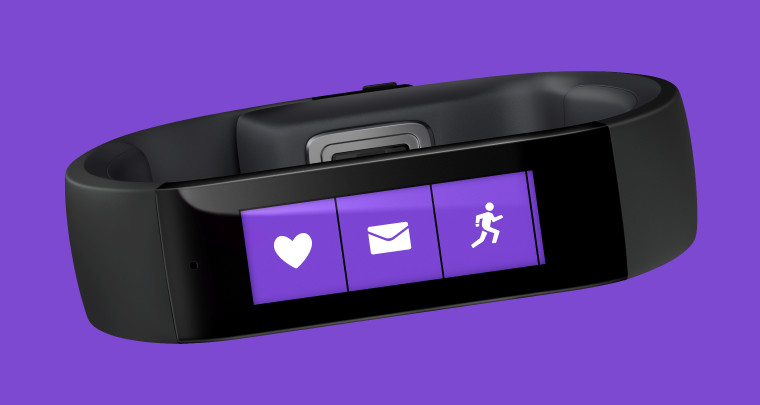
In October, the company unveiled its long-awaited wearable device – although Microsoft representatives tend to go out of their way to avoid referring to it as a smartwatch. The reason for this is that the company is trying to differentiate its product from other smartwatches on the market, with a major focus on health and fitness.
The $199 Microsoft Band features ten sensors, including GPS, optical heart rate monitor and a UV sensor, but its launch was about much more than just a wrist-bound device. Microsoft has also developed an entire Health platform, through which it collates the data gathered by the device, with the ultimate aim of sorting it into simple, easy-to-understand information for the user, along with actionable insights to encourage users towards more healthy lifestyles.

Embracing its evolving cross-platform strategy, Microsoft has made the Band compatible not just with Windows devices, but also with iOS and Android; its Health platform is also available to third-party partners, with UP by Jawbone and RunKeeper among the companies already supporting it.
The launch of Microsoft’s smartwatch wearable device was far greater in the scale of its ambitions than any other such device to date. But there was another smartwatch that captured the attentions of consumers around the world in a much bigger way – and it’s a device that’s still months away from launch.

The Apple Watch was unveiled in September, but it’s not expected to launch until the first half of next year – perhaps as late as Q2. As expected, Apple isn’t bothering itself by competing with the many, many smartwatches in the $100-$200 range, and is instead positioning its device as a much more premium offering with prices starting – yes, starting – at $349.
Three versions of the Apple Watch will be available in two sizes, with ultra-premium versions featuring precious metals expected to sell for as much as $5,000. Yeah, five thousand bucks – that’s not a typo.

The device introduces a new user interface that harnesses the touch screen, along with a manual rotary dial that can used to zoom or scroll in certain apps. To the surprise of no-one, Apple has no interest in embracing cross-platform synergies, like Microsoft has, and has instead locked down the Watch to work only with its handsets, from the iPhone 5 onwards.
That includes, of course, the two new iPhones that Apple launched earlier this year. The company had stubbornly resisted calls for larger iPhones for some time, despite growing demand for smartphones with larger screens, but in September, the Apple finally gave in, launching two iPhones with far bigger displays than their predecessors.

The iPhone 6 has a 4.7-inch 720p display, while the iPhone 6 Plus features a massive 5.5-inch screen with Full HD resolution. Many observers noted that these resolutions hardly befit the eye-watering sums that Apple demands for these handsets – the more affordable LG G3, for example, also has a 5.5-inch display, but with Quad HD (2560x1440px) resolution.
But the new iPhones have another trick up their sleeve. Alongside the new handsets, Apple also launched a new payment platform – imaginatively named Apple Pay – which allows consumers to use their iPhones as a digital wallet, to make mobile payments on the go. It allows the new iPhones to interact with point-of-sale terminals via NFC, process and handle encrypted payment information, and get payment authorization from the user via Touch ID fingerprint authentication.

Apple is reportedly taking a cut of 0.15% of every transaction carried out via its payment platform, and by positioning itself to potentially integrate its service into every purchase that an iPhone user ever makes, the company stands to make a phenomenal amount of money from Apple Pay in the future.
Unsurprisingly, the new iPhones have sold in astonishing numbers, breaking every previous sales record, with over 10 million units sold in the first weekend alone. But the launch wasn’t entirely incident-free, thanks to a major controversy and doubts over Apple’s response to it.

Soon after the handsets went on sale, reports began to emerge from users who had found that their new iPhone 6 and 6 Plus handsets had been ‘bending’, with no deliberate or obviously excessive force being exerted upon them.
The reports quickly spread – thanks in no small part to the #bendgate and #bentgate hashtags on Twitter – with many people speculating that the ultra-thin bodywork of the new iPhones had left them structurally weakened. As journalists and even die-hard Apple fans began to report examples of their iPhones bending in the same way, Apple finally reacted.

Apple’s PR team is notorious for stonewalling the media, and indeed for treating the press with utter contempt, often simply ignoring requests for information or comment. But the scale of coverage regarding the bendy iPhones – which included reports on global news channels – prompted Apple to open up its handset testing facilities to the media, demonstrating how extensive its testing had been, in its efforts to prevent the kind of damage to the new iPhones that had been widely reported.
The company attempted to downplay the problem, and claimed that it had received just nine complaints from users with bent handsets. The true scale of the problem was clearly wider than this though, as more owners continued to complain about their expensive new phones being ruined in the days after Apple made this claim. In fact, an independent website was set up to gather user complaints, with hundreds of examples having been catalogued so far.
Someone should probably send Apple PR an email to let them know that “hundreds” is more than “nine”. We’d send them an email ourselves, but they’d probably just ignore it.

Another company that has found itself at the centre of a major controversy this year – albeit for entirely different reasons – is Sony.
It all began when the media giant’s movie-making division, Sony Pictures, was hacked in a massive security breach that laid its secrets bare for all the world to enjoy, when the hackers later began to drip-feed details that they had trawled from the data they’d harvested. Things quickly escalated, as personal details of stars, and former and current employees were later published online.
The group behind the hack, ‘Guardians of Peace’, demanded that Sony cancel its plans to release ‘The Interview’, an action-comedy movie focusing on an American plot to assassinate North Korea leader Kim Jong-Un. American authorities claim that they have confirmed that the hack originated in North Korea, but some independent observers have disputed this claim.
Sony initially resisted the hackers’ demands, but later caved after threats were made to movie theaters; it canceled the film's New York premiere, before withdrawing it completely from cinemas worldwide. But the company then performed yet another U-turn, allowing cinemas to screen the movie if they desired, as well as releasing it via movie stores and video on demand services, such as iTunes and Xbox Video. Despite its limited release, box office sales alone exceeded $1 million on its first day.

But things are far from over for Sony, which will go into 2015 with the prospect of further leaks to look forward to. The hackers have already leaked an early script for the new James Bond movie, SPECTRE, and revealed details of a (bizarre) crossover movie between the Men in Black and Jump Street movie series. One can only speculate what else will be revealed in the new year, and it’s perhaps unsurprising that Sony is now threatening legal action to journalists and news organisations that dare to publish information originating from further leaks.
But let’s not forget that Sony had the opportunity to prevent the hack from ever happening, as vulnerabilities in its IT infrastructure were highlighted long before the hack took place – warnings that it chose to ignore. Little wonder that the company is now facing class action lawsuits from former employees whose details were leaked, alleging that Sony was neglectful in its failure to adequately protect that data from being stolen.

It’s been a tough twelve months for Google too, as the company has faced increasing criticism from across the globe over how it manages its search results, including allegations of antitrust violations in certain markets.
In May, for example, an antitrust class-action lawsuit was filed against Google in the US, alleging that it had created an ‘illegal monopoly’ in the mobile search market by pre-loading its own apps onto devices running its dominant Android OS.
Things have been much worse for Google over in Europe though. In July, the CEO of one of Europe’s largest media publishing groups, Axel Springer, accused Google of manipulating its search results to downgrade third parties in searches where Google offers a competing product.
Search for ‘london weather’, for example, and you’ll get a forecast right in the search listings, provided by Google’s commercial partner for weather results, Weather.com. Some observers, including Axel Springer’s CEO, claim that this ‘unfair’ arrangement cynically provides more exposure to Google’s services and those of its partners at the expense of other companies, which consequently struggle to be seen.

Concerns have been lingering for some time over allegations of anticompetitive behaviour by Google in Europe. Just a few weeks ago, things took an interesting turn, as the European Parliament voted in favor of having the option of breaking up Google, splitting its search operations off into a separate business unit from the rest of the company.
However, the vote is unenforceable, as the European Parliament does not have the power to compel Google to comply with its decision. Rather, the Parliament’s vote is seen as a means to motivate the European Commission – which does have the regulatory clout to make things happen – to consider the issue of Google’s alleged antitrust violations. This will surely prove to be a story worth following in the new year.

But a much more positive development for Google in 2014 was the launch of Android 5.0. Known also as ‘Lollipop’ – in the company’s tradition of giving all of its Android releases the name of a deliciously sweet treat – it is perhaps the most significant OS update in the company’s history.
Android 5.0 is the launch platform for a completely new visual language for Google, which the company calls ‘Material Design’. It incorporates many of the ‘flat’ design elements from Microsoft’s Modern design language, but adds dimension by layering some interface elements, and brings it all to life with simple transition animations and interesting visual cues.
Lollipop is significant for more reasons than design alone, though. It brings with it a major effort by Google to encourage device manufacturers to create higher quality low-cost handsets, under the Android One initiative. OEMs building Android One devices work closely with Google on both hardware and software development, and Google handles OS updates for these phones directly. The first such devices have gone on sale for around $100.
But beyond smartphones, Android 5.0 marks a major push by Google to bring its OS to many more devices than ever before. With it, the company is aggressively targeting car manufacturers with a comprehensive Android Auto platform, and it is again hoping to conquer living rooms, following the disastrous failure of its awful Google TV platform.

Android TV features a completely new user interface, voice interactions and search, and support for Android apps, and Google has been talking up the capabilities of the platform on the gaming front too. Indeed, Google surprised many in October by unveiling the Nexus Player, the first Android TV device, priced at $99 and built by ASUS, with an optional gaming pad available for $39.
It was announced alongside two further showcase devices for Android 5.0. The first was the $399 Nexus 9, a premium tablet manufactured by HTC, with an 8.9-inch QXGA (2048x1536px) IPS LCD, dual-core 2.3GHz 64-bit NVIDIA Tegra K1 processor, 2GB RAM, 16/32GB storage, 8MP/1.6MP cameras, and a 6700mAh battery.

The second device was the Nexus 6, a flagship-class handset built by Motorola, with a 6-inch Quad HD (2560x1440px) AMOLED screen, quad-core 2.7GHz Snapdragon 805 processor, 3GB RAM, 32/64GB storage, 13MP/2MP cameras, and a 3220mAh battery. Google attracted some criticism for launching such a massive handset to replace the Nexus 5, as well as for the high price of the new device, which costs $649 off-contract.

Amazon had been widely expected to launch its first smartphone this year, with many expecting the company to roll out an affordable handset, similar to its low-cost approach with tablets and its Fire TV set-top box. Instead, like Google, Amazon rolled out a flagship-class device with a price tag to match.
Unfortunately, the Fire Phone didn’t have the specs to match – its 4.7-inch 720p display, for example, was hardly what consumers expected when asked to pay $649 off-contract for the device, or $199 on a two-year plan. It didn’t help that the handset was exclusive to AT&T in the US, nor was it particularly wise to limit its availability by launching it exclusively on O2 in the UK, several weeks after it had been widely panned in US reviews by critics and consumers alike.
Many complained about the Fire Phone’s clumsy OS, its small battery and lacklustre design, among other things – so it’s hardly surprising that the phone was a commercial disaster, and a big public embarrassment for both Amazon and AT&T. Amazon moved quickly to reduce the price of the handset in an attempt to shift stock, but it booked a $170 million write-down related to the handset, more or less confirming it as a massive flop.
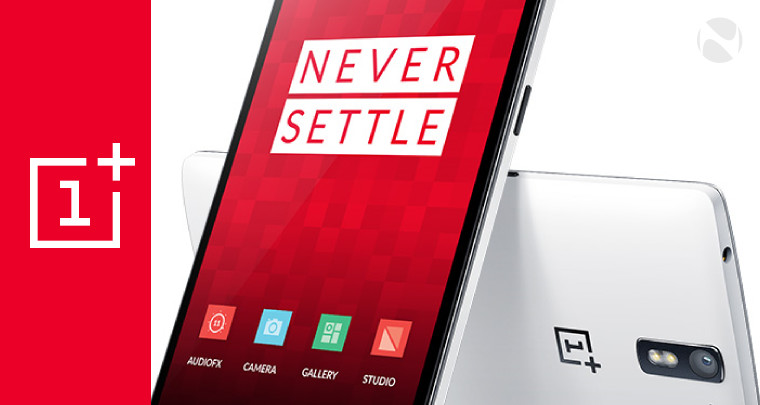
But a different manufacturer has managed to generate huge interest for its Android flagship, despite making plenty of its own missteps along the way. Chinese firm OnePlus regularly made it onto our front page in 2014 – although not always for the right reasons.
After unveiling its feature-packed One handset in April for just $299 off-contract, the company launched a campaign to generate interest for the device by inviting potential buyers to destroy their current phones on video in the hopes of winning the chance to buy the device for just $1. Unfortunately, many entrants were confused by the rules of the contest, and smashed up their phones prematurely.
Concerns were also raised regarding the utter stupidity of recommending that people smash up handsets containing volatile Lithium-Ion batteries. You need only need to watch this video to understand the considerable dangers of doing so, which led many to criticize OnePlus for foolishly inviting potential buyers to put themselves in harm’s way.
A sexist photo contest, the company’s baffling decision to redesign a standard regulatory mark, and admissions of design failures that forced it to bin its swappable covers, all caused further embarrassment for OnePlus in 2014. Some customers also complained of receiving handsets with accessories missing, or with other packaging flaws, and the company has also done its best to brush off widespread complaints of ‘banding’ issues on the device’s screen.
And yet, despite all this, consumers continue to jump through hoops in order to get an invite to be able to buy the OnePlus One, and interest in the device remains high. OnePlus said in November that it aimed to sell a million units before the end of 2014 – and given what an impressive device it is, we wouldn’t be at all surprised if it hits that target.
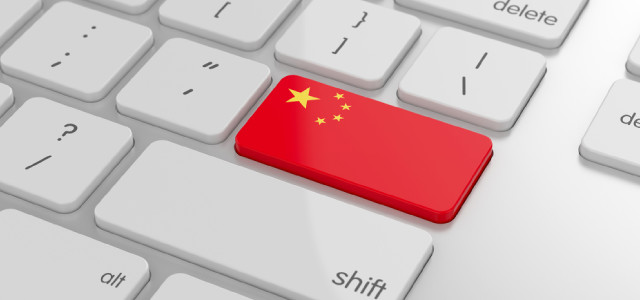
China has been on a protectionist spree this year, banning numerous software products from official government procurement lists, including those from Symantec and Kaspersky, along with Microsoft’s Windows 8. Indeed, China is developing its own operating system, as a means of reducing its reliance on foreign software.
Microsoft, in particular, has faced a very difficult year in China. The company’s offices across the country were raided by authorities in July, with a further set of raids a week later, as part of an government investigation into alleged antitrust violations there. A few weeks ago, it was also fined $140 million by the Chinese government over cross-border tax evasion.
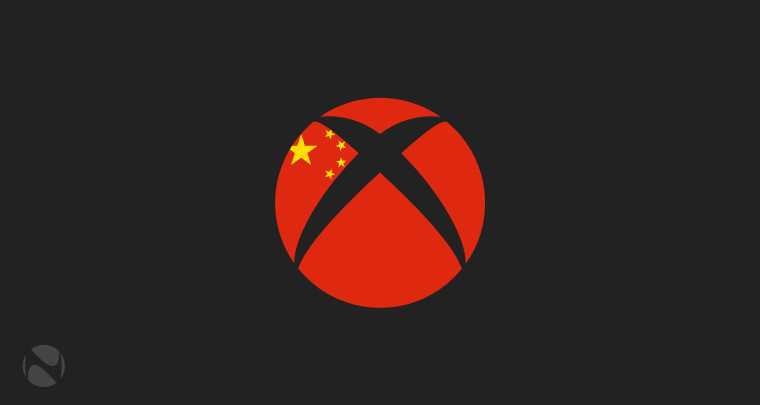
Like Sony, which will soon launch its PlayStation 4 in China, Microsoft had to jump through all sorts of hoops to gain approval for the sale of its Xbox One there, following the country’s decision to drop a 14-year ban on foreign games consoles. Even so, the selection of games available in China is severely limited, due to cultural limitations imposed by the government, forbidding games that promote activities such as gambling or adultery, excessive violence, or anything else that censors consider potentially detrimental to the sensitivities of the nation’s citizenry.
Elsewhere, Microsoft and Sony have both fought hard in the console war with their respective devices, but it’s the PlayStation 4 that has been the clear winner so far, massively outselling the Xbox One in every market. But Microsoft has been fighting back hard this year.

It introduced a cheaper Kinect-free version of the Xbox One, and more recently, launched new bundles and even lower prices for the console. In some markets, the Xbox One is now cheaper than the PS4 for the first time.
Beyond pricing, Microsoft has also been working hard to add to the capabilities of its console throughout the year, delivering all sorts of new features, including improvements to Snap functionality, custom backgrounds on the Dashboard, and a new Media Player app with MKV playback support, among dozens of other additions.
As a result of these efforts, the Xbox One overtook sales of the PS4 in the US for the first time in November, and we’ll be eagerly awaiting the next set of sales data, to see if Microsoft can maintain that momentum and finally begin narrowing the gap with Sony.
- - - - -
Of course, there are plenty of stories that didn't make it into our review of the year here - from drones and self-driving cars, to OS X Yosemite, the rise of Xiaomi, declining Samsung smartphone demand, and plenty more. Be sure to let us know your thoughts on the year's biggest stories below!
Chinese flag button on keyboard image via Shutterstock
_small.jpg)















5 Comments - Add comment